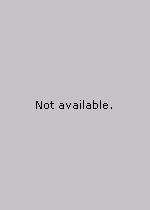| 1/2006 - 1 | View TOC | « Previous Article | Next Article » |
Simulation Analyses of Pattern Formation Processes of Chemotactic Bacterial Colonies in Semi-Solid MediaMasaaki ISHIKAWA |
| Extra paper information in |
| Click to see author's profile in |
| Not available online | Views: 1,742 |
Author keywords
Chemotaxis, colony formations, E. coli, numerical simulations, semi-solid media, stochastic reaction diffusion systems, S. typhimurium
References keywords
References keywords will be displayed on the next page reload.
About this article
Date of Publication: 2006-04-02
Volume 6, Issue 1, Year 2006, On page(s): 2 - 7
ISSN: 1582-7445, e-ISSN: 1844-7600
Digital Object Identifier: Not assigned
Abstract
Many kinds of spatio-temporal patterns appear in various fields of engineering including chemical and biological engineering. Among such spatio-temporal patterns, analyses of patterns created by the so-called self-organization are very important as basic problems in engineering, mainly because analyses of the spatio-temporal patterns in phase transitions of polymeric materials are essential to develop new materials and the analyses of epidermal patterns of animals and seashell patterns shed light on mystery in biology. In this paper, focusing on the chemotactic bacterial colony patterns as the spatio-temporal patterns created by the self-organization, we study the influence of the random disturbance on the colony formations. |
| References | | | Cited By |
On-line references are not available - see the PDF file if available.
Faculty of Electrical Engineering and Computer Science
Stefan cel Mare University of Suceava, Romania
All rights reserved: Advances in Electrical and Computer Engineering is a registered trademark of the Stefan cel Mare University of Suceava. No part of this publication may be reproduced, stored in a retrieval system, photocopied, recorded or archived, without the written permission from the Editor. When authors submit their papers for publication, they agree that the copyright for their article be transferred to the Faculty of Electrical Engineering and Computer Science, Stefan cel Mare University of Suceava, Romania, if and only if the articles are accepted for publication. The copyright covers the exclusive rights to reproduce and distribute the article, including reprints and translations.
Permission for other use: The copyright owner's consent does not extend to copying for general distribution, for promotion, for creating new works, or for resale. Specific written permission must be obtained from the Editor for such copying. Direct linking to files hosted on this website is strictly prohibited.
Disclaimer: Whilst every effort is made by the publishers and editorial board to see that no inaccurate or misleading data, opinions or statements appear in this journal, they wish to make it clear that all information and opinions formulated in the articles, as well as linguistic accuracy, are the sole responsibility of the author.



